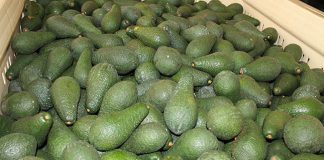
Photo: Bill Kerr
Aphids feed on these and then enter the land and introduce viruses. Once the virus is in a land it will usually spread. There is currently no cure.
READ How to fertilise a crop correctly
Have a soil analysis done to get the nutrition correct before preparing the land. I’m constantly asked for a fertiliser programme for specific vegetables, but in fact you need to fertilise the soil to suit a wide range of vegetables.
The effects of a lower PH value
The soil pH should be about 6,5, but can go a little lower or a fair amount higher. If you have potatoes in the rotation, opt for a lower pH; this will reduce the risk of scab but still be suitable for the other crops grown.
Be warned, though; a lower pH will greatly increase the possibility of a molybdenum deficiency. As a precaution, soak the seed in 25g sodium molybdate per 5ℓ water for a few hours.
Also keep an eye out for signs of molybdenum deficiency, seen as a yellowing and burning of the leaf edges. In this case, you can apply a foliar feed, which will correct the problem rapidly.
READ Growing leeks in your garden
When you get the soil analysis back, calculate the amount of major elements to apply. The laboratory can usually advise on what’s necessary. You can then top it up from year to year if necessary.
For vegetables, be generous with your applications, then use nitrogen to regulate growth according to the crop and growth conditions.
A possible exception is where you are using leased ground and don’t want to spend too much on improving the ‘general fertility’. If this is the case, rather band-place the fertiliser.
You can also use this strategy when starting off on a tight budget, although it is not a good long-term solution.
Pumpkins and cutworm control
In the case of pumpkins, plant populations are relatively low, so every plant counts. Due to its higher yield and fruit quality, the hybrid seed used these days is expensive.
READ Why pumpkins need space to grow
Ensure a good stand by providing the right conditions for optimal germination and making sure you don’t lose plants to cutworm damage. If young weeds are growing on the area before preparation for planting, scout the land to see if cutworms are present.
The signs are easy to spot: after biting through plants, cutworms drag the leaves underground and these can be seen clearly next to a damaged plant.
Proactive spraying for cutworms
If you find evidence of an invasion, begin cutworm control well before planting by spraying a pyrethroid over the weeds.
Even if you don’t find evidence of cutworms, it is still worth spraying the land. Moths lay
their eggs on the leaves and these will survive on plant material unnoticed until large enough to start their damage. Never take a chance with this destructive pest!
Bill Kerr is a vegetable specialist and a breeder of a range of vegetables.











